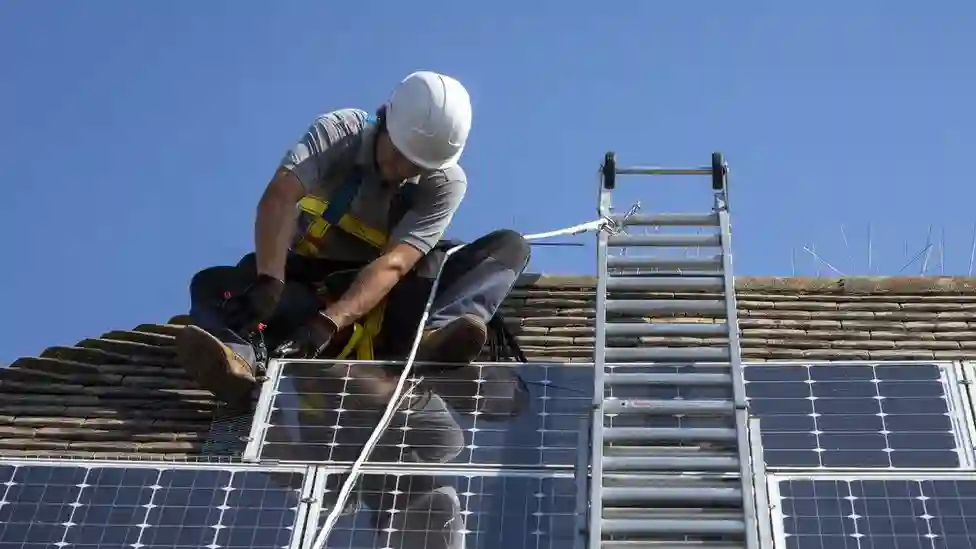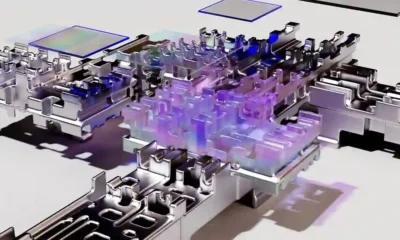
Solar energy has emerged as a clean and sustainable power source with the potential to revolutionize our energy landscape. Central to the effectiveness of solar panels is their efficiency – the measure of how effectively they convert sunlight into electricity. In this comprehensive guide, we’ll delve into the world of solar panel efficiency, explaining the key concepts, factors that influence it, and how to interpret efficiency ratings.
What Is Solar Panel Efficiency?
Solar panel efficiency refers to the percentage of sunlight that a solar panel can convert into usable electricity. It represents the panel’s ability to capture solar energy and convert it into electrical power. Efficiency is a crucial metric because it directly impacts how much electricity your solar panels can generate from the available sunlight.
Efficiency is typically expressed as a percentage and can vary from one type of solar panel to another. Higher efficiency panels can convert a larger percentage of sunlight into electricity, which means they can generate more power for the same surface area or under low-light conditions.
Factors Influencing Solar Panel Efficiency
Several factors influence the efficiency of solar panels. Understanding these factors can help you make informed decisions when choosing solar panels for your home or business:
1. Solar Cell Technology
Different solar cell technologies offer varying levels of efficiency. The three primary types of solar cell technologies are:
- Monocrystalline: These solar cells are made from a single crystal structure, making them highly efficient (typically 15% to 22%). They are space-efficient and perform well in low-light conditions.
- Polycrystalline: Polycrystalline solar cells are made from multiple crystal structures and are slightly less efficient (typically 13% to 16%) than monocrystalline cells. They are cost-effective but require more space for the same energy output.
- Thin-Film: Thin-film solar panels are less efficient (typically 10% to 12%) but are lightweight and flexible. They are suitable for specific applications, such as building-integrated photovoltaics.
2. Temperature
Solar panel efficiency decreases as temperatures rise. High temperatures can cause a reduction in the panel’s voltage, leading to a decrease in overall efficiency. This is known as the temperature coefficient and is typically provided by manufacturers as a percentage decrease in efficiency per degree Celsius above a standard temperature.
3. Dust and Debris
Accumulation of dust, dirt, leaves, or bird droppings on the surface of solar panels can reduce their efficiency by blocking sunlight. Regular cleaning and maintenance can help mitigate this issue.
4. Shading
Partial shading of solar panels can significantly reduce their efficiency. Even a small shadow on one cell can affect the entire panel’s output. If shading is a concern, consider using microinverters or power optimizers to mitigate the impact.
5. Panel Age
Over time, solar panel efficiency may degrade slightly. Most manufacturers provide a warranty that guarantees a certain level of efficiency over a specified number of years, typically 25 to 30 years.
6. Orientation and Tilt
The orientation and tilt angle of solar panels also affect their efficiency. Panels facing directly south (in the Northern Hemisphere) and tilted at an angle close to your latitude can capture the most sunlight throughout the day.
How to Interpret Solar Panel Efficiency Ratings
When shopping for solar panels, you’ll come across different efficiency ratings. Here’s how to interpret them:
1. Module Efficiency
This is the efficiency rating of the entire solar panel module. It indicates how well the entire panel converts sunlight into electricity. Module efficiency ratings typically range from 10% to 22%. Higher efficiency modules are more expensive but can generate more power per square foot.
2. Cell Efficiency
Cell efficiency refers to the efficiency of the individual solar cells within a module. It’s usually higher than the module efficiency since some energy is lost at the interconnections between cells. Cell efficiency ratings can exceed 25% for advanced technologies like multi-junction cells used in concentrated solar power systems.
3. STC Efficiency
Standard Test Conditions (STC) efficiency represents the efficiency of a solar panel under laboratory conditions, which include a set temperature and a fixed level of sunlight. STC conditions are not representative of real-world conditions, but they provide a standardized basis for comparing different panels.
4. PTC Efficiency
Photovoltaic USA Test Conditions (PTC) efficiency is a more realistic measure of a solar panel’s performance, as it considers factors like temperature and real-world solar radiation levels. PTC efficiency is typically lower than STC efficiency.
5. NOCT Efficiency
The Normal Operating Cell Temperature (NOCT) efficiency accounts for the effect of temperature on solar panel performance. It provides an estimate of a panel’s efficiency under specific temperature conditions.
Choosing the Right Solar Panels
When selecting solar panels for your installation, consider the following factors in addition to efficiency:
- Cost: Higher efficiency panels are often more expensive. Assess your budget and energy needs to determine the best balance between efficiency and cost.
- Space Available: If you have limited roof space, higher efficiency panels may be a better choice since they can generate more power in a smaller area.
- Location: Consider your location and the local climate. In areas with abundant sunlight, the efficiency of solar panels may be less critical, whereas in regions with lower solar irradiance, higher efficiency panels can be more advantageous.
- Warranty: Review the manufacturer’s warranty, especially the warranty on performance. It guarantees that the panels will maintain a certain level of efficiency over time.
- Incentives: Check if there are any local or federal incentives that encourage the use of high-efficiency panels, as this can affect your decision.
- Environmental Impact: Consider the environmental impact of the panel’s manufacturing process and materials. Some manufacturers prioritize sustainability and offer eco-friendly options.
Conclusion
Solar panel efficiency is a critical factor in determining how much electricity your solar panels can generate from the available sunlight. Understanding the factors that influence efficiency and how to interpret efficiency ratings can help you make informed decisions when choosing solar panels for your home or business.
While higher efficiency panels often come at a premium price, they can offer significant benefits, especially in situations with limited space or lower solar irradiance. Ultimately, the choice of solar panels should align with your budget, energy needs, and the specific conditions of your location. With the right combination of efficiency and other considerations, you can harness the power of the sun to generate clean and sustainable energy for years to come.
Related posts:


Forex & Crypto
5 Best Ways to Earn Crypto While You Sleep in 2025
Categories
- Apps (1)
- Automotive (23)
- Beauty (7)
- Business (122)
- Celebrities (2)
- Digital Marketing (21)
- Ecommerce (2)
- Education (22)
- Entertainment (39)
- Events (6)
- Fashion (1)
- Features (4)
- Finance (1)
- Fitness (10)
- Food (2)
- Forex & Crypto (23)
- General (116)
- Health (48)
- House (61)
- Lifestyle (57)
- Marketing (8)
- Parenting (3)
- Pets (10)
- Real Estate (8)
- Safety and Security (14)
- Social Media (31)
- Sports (142)
- Technology (73)
- Travel (23)






















